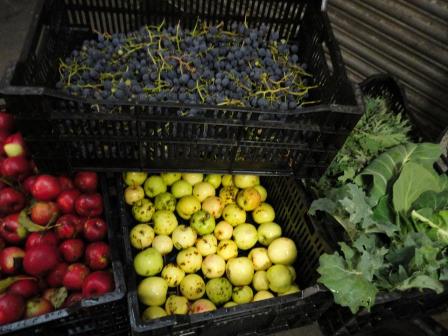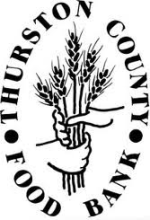The Thurston County Food Bank hopes to one day have a full food bank farming operation, but in the meantime they have a very successful relationship with a local service club to manage a food bank garden project. The Kiwanis Club of Olympia has garden coordinators, a funding source, a cohort of committed volunteers, and garden plots on land offered to be used for the cause. With these resources, the food bank garden grows about 40,000 lbs of food each year. Some vegetables are sold at a community market to raise money for seed purchasing, and the rest goes straight to the food bank. With the help of donated funds, the food bank is able to employ garden coordinators. Produce staff (including the gleaning coordinator) work closely with garden coordinators throughout the year.

In addition to the garden project at Kiwanis, the Thurston County Food Bank has support from a plethora of community members, churches, facilities and institutes. There are individuals growing food for the food bank, gardens on church properties, community gardens and more donating a small to large portion per year of produce to the food bank. These relationships have been cultivated over time and made possible through communication, discussions, and ‘community conscious’ members of Thurston and surrounding counties.
Managers of a food bank farm or garden will want to know what types of crops to grow, so think about what capacity your food bank has to move produce out the door. Is there enough storage space for a full potato or squash harvest? Is there enough cooler space for 800 pounds of carrots? Do you have a re-packing kitchen where food could be processed for longer storing? Does your client base have an interest in fresh produce, and the resources to prepare it? One opportunity for communicating with interested community members is developing a grower’s round table, presenting individuals or groups with vested interest with the opportunity to participate in a discussion around a food banks capacity and needs. Not only is it important to open discussion for the food banks concerns and needs, but also for the community members who are planning on putting time and resources into a garden.
The first steps to developing a better produce program are to research and plan. Survey your clients about their needs and preferences. If more fresh produce is something that is desired, consider moving forward with your plan. If most people are not interested, try providing educational materials on good nutrition, or ask whether there is interest in cooking demonstrations or food samples. Having more fresh produce available will often mean the need for more information; if you have unfamiliar produce, make sure to provide information and recipes so people are encouraged to take it home and use it, rather than pass it up or throw it out. Education is part of any good produce or garden program, so do not overlook the time it might take to develop and distribute outreach materials. See the Kiwanis Garden Facebook page: facebook.com/OlympiaKiwanisFoodBankGarden


